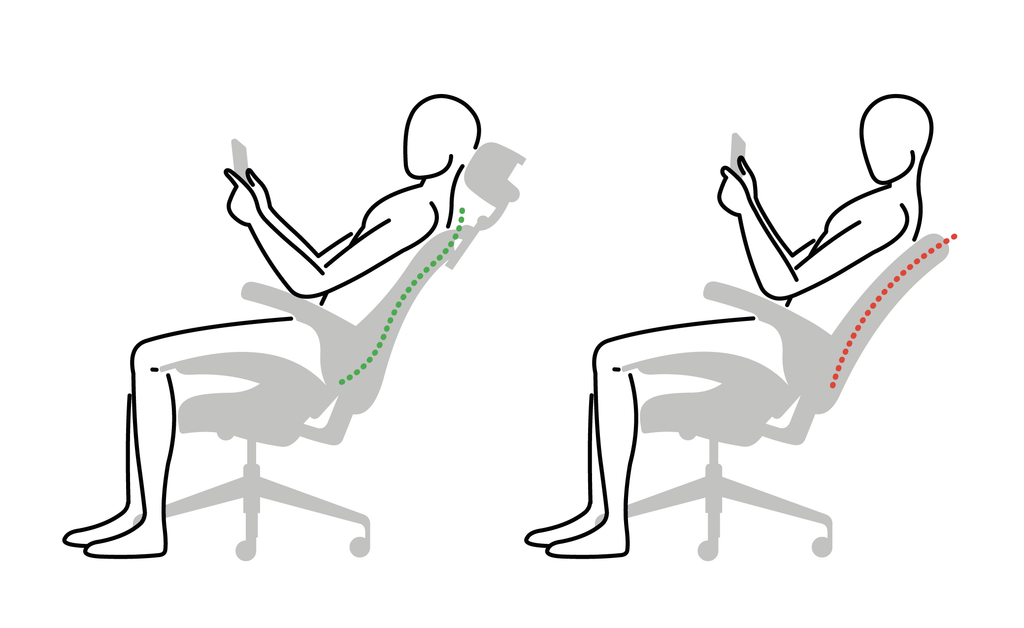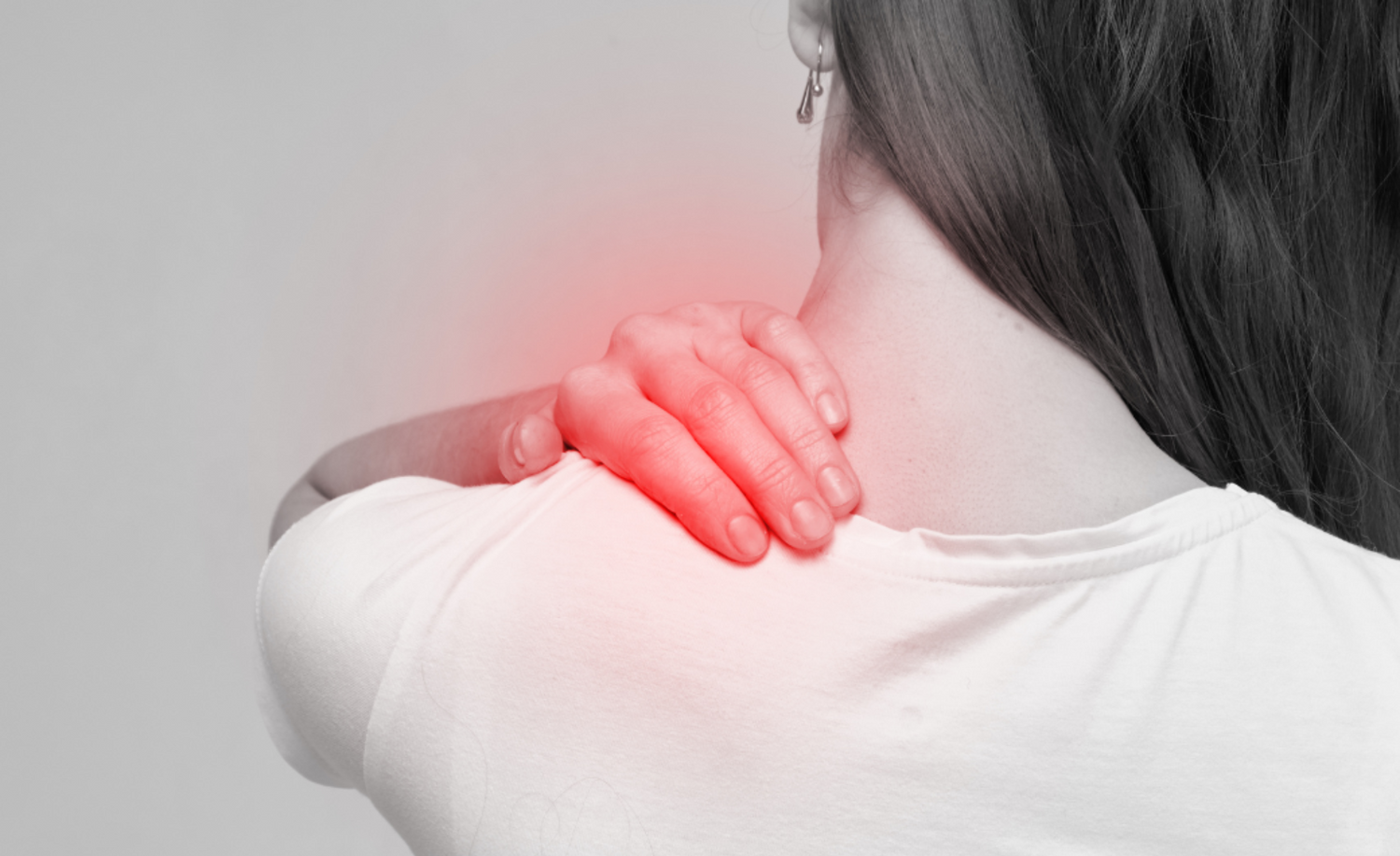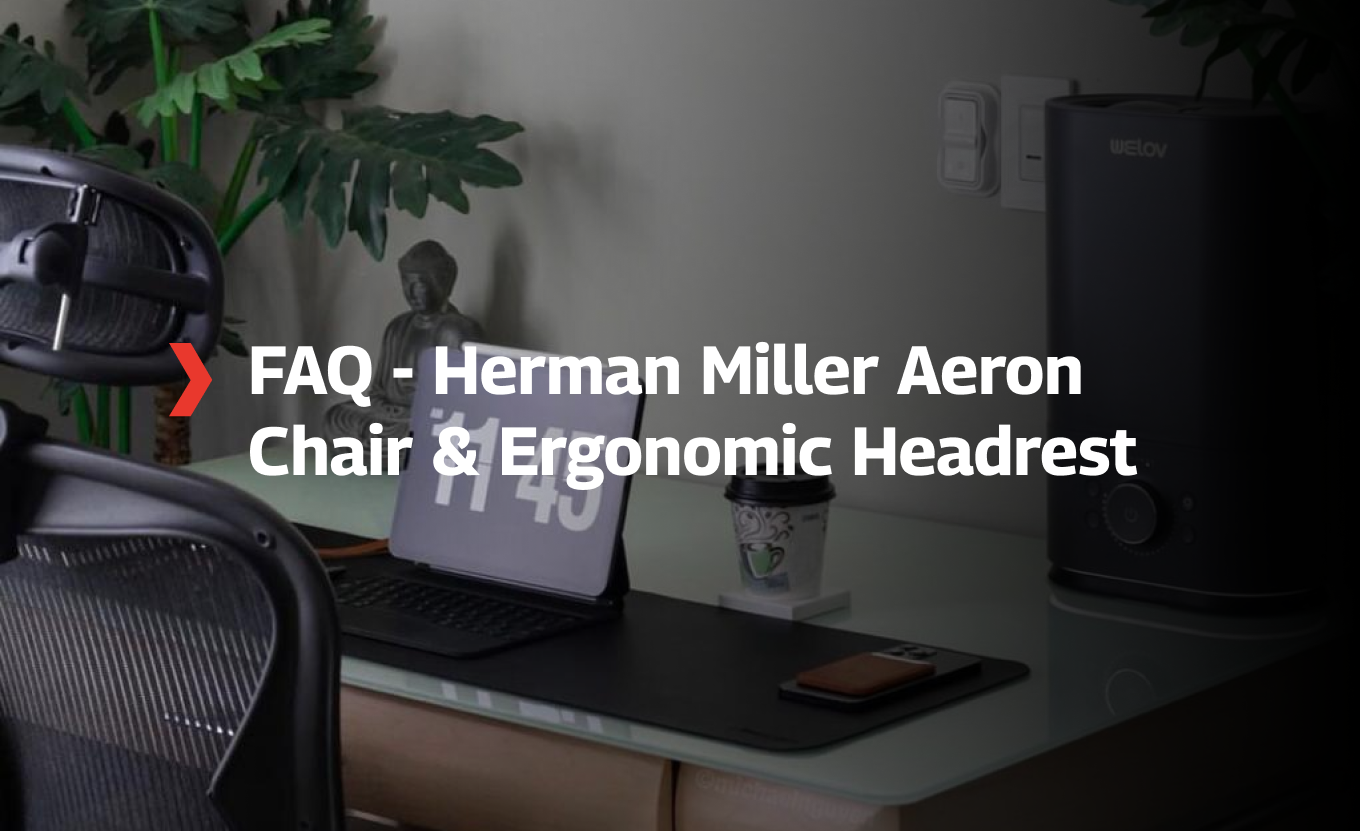Why Invest in Ergonomic Chair and Headrest?
Article by Jan Tissing BHS, MHs
The overwhelming majority of you are reading these lines from a chair whose original design was developed far before the typewriter's invention. Before we had the privilege to perform our tasks in a superior ergonomic Aeron Chair with a complementing headrest. Before the days when office furniture design focuses on the health of employees. A seat and back designed to sit straight up for tasks performed half an arm’s length before the body.
That exact chair design blueprint which predates even the IBM 650 from 1953, is now expected to suit users’ needs as they perform multiple tasks using a wide array of new technologies: the smartphone, tablet, smartwatch, laptop, and flatscreens. Long before voice controls like Siri and Alexa. In other words, most chairs are prehistoric in the context of technology and the present work world.
There’s a fear that the commonplace “office chair” design is too outdated to suit the various needs of the modern office worker. There’s a misconception that sitting for extended amounts of time is dangerous, which has created popular misconceptions that “sitting is the new smoking” and “sitting kills.” Sitting is a good way, and usually, the best way, to perform present-day office tasks.
That said, humans are not fit to sit for a long time in the same position, especially when this position conflicts with body mechanics. Nonetheless, a good ergonomic chair and a headrest can provide proper support and facilitate comfortable and healthy sitting while we work.

Evolution of Chairs and Office Ergonomics
How did we wind up in this uncomfortable position?
It all started when technical innovation in administration grew faster than ergonomics, which should have helped the administrators to stay productive and healthy. While tech evolved, the typewriter into the PC into the laptop and brought us the tablet and smartphone along the way, our chairs stayed the same. 4-5 - star foot base, synchro mechanism, a back, a seat and, if lucky, finished with adjustable armrests.
Health problems caused by not using a headrest
Unfortunately, the horizontal table, combined with a computer screen and keyboard that invites you to sit forward, results in many ergonomic conflicts. Studies show these can lead to many health issues. From pain in the lower back, neck, and shoulders to diabetes and cardiovascular problems.
One might wonder about the impact of reading “just one e-mail” or taking that phone call while not sitting correctly. The research shows that incorrect sitting posture starts a cascade of problems triggering the long back muscles to work overtime, flattening the lumbar spine, and increasing tension in the neck and shoulders. Children can suffer from backaches and irreversible adaptations in their spinal alignment. Research also shows that proper office ergonomics elevate the morale of employees and correlate with fewer health-related claims in the office environment. We created a complete and downloadable Office Ergonomics Checklist.

Headrest in Office Environment
How to eliminate spine problems and decrease tension in the neck and shoulders?
Most present-day chairs commonly used in offices are made for a single task. Due to too many or illogical knobs, or even worse, the cheap modular components, these “features” fail to automatically answer the user’s needs of performing different tasks.
Performing such tasks in an optimal position while seated results in increased productivity and fewer physical problems in the neck, shoulder, head, and lower back. A neck rest gives you more ergonomic sitting positions in your desk space while using modern technologies. You can operate the computer, make a call, have a video conference, read on your tablet and quickly check a message on your smartphone, all while seated comfortably and healthily.

So How Can We Determine what is a “Correct” or “Healthy” Posture?
Jan Tissing, a world-renowned physiotherapist, notes: “The cervical spine is a real piece of engineering. It is the moving base and holds our control center with a gyroscope, sound, vision, hearing, and smell. It furthermore runs the controls of almost everything in our body in two directions. This asks a lot during our life and the phrase “form follows function” is certainly true for the cervical spine that forms the neck.”
More About Jan Tissing
Jan Tissing is a Dutch physiotherapist, primarily focusing on preventing injuries resulting from the workplace. After studies in physiotherapy and professional ergonomics. Jan worked as an ergonomist. From product design and development to workplace environments, Jan is an expert in ergonomics and the interactions of the human body with seating and furniture products.
Since January 2016, Tissing has been making multiple time-lapse movies to study office workers’ postures in their day-to-day activities. Ideally, the head should be positioned above the thorax in a balanced fashion with minimum muscle use. Inevitably, after some time seated, the muscles will naturally tire. This starts a cascade of problems triggering the long back muscles to do overtime, flattening the lumbar spine, and causing tension in the neck and shoulders.
“For all the above reasons”, Tissing continues, “I strongly believe a good, ergonomic headrest is necessary for today’s workspace. We do not live in the prehistoric era anymore. After all, we moved away from typewriters to computers; now it’s time to move on to chairs that match our modern work styles.” The best ergonomic chairs are created by Herman Miller, such as the Aeron Chair. For more information regarding the benefits of an Aeron Chair, take a glance at our Herman Miller Aeron Chair and Headrest FAQ. It’s time to align your life and support a natural S-curved spine with a good chair and complementing headrest.




Leave a comment
This site is protected by hCaptcha and the hCaptcha Privacy Policy and Terms of Service apply.